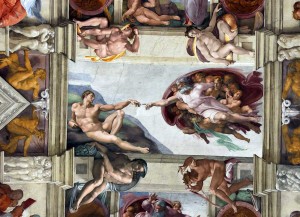Archaeology of Museums
Field Exercise:
1. Select 5 to 10 artifacts that you believe best represent a specific culture from those museum collections available. Please be prepared to consider those values and that knowledge that underlie your specific reasons for selecting the objects or artifacts in question. The cultures to be considered are as follows:
• Ohlone Mutsun: American Indians from 5,000 BC to Present
• Spanish Colonial: AD 1797 to 1821
• Mexican Republican: AD 1822-1848
• Early Euro-American: AD 1849-1870
• Victorian Revivalist: AD 1870-1890
• Vernacular American: AD 1890-1940
• Modern American: AD 1940-Present
2. Please proceed to create a cultural narrative (i.e., characterization) of the peoples under consideration based exclusively on the artifacts at your disposal.
3. Consider the following museum criteria for understanding and interpreting the significance of the objects that you have selected for study:
• Functional significance (original and museum uses)
• Inherent significance (values intrinsic to specimen)
• Relational significance (historical relationships to groups or individuals)
• Anticipated significance (potential future enhancement of importance)
• Political significance (“contested” values and political importance)
Lab Questions:
1. Do you believe that the artifacts and texts selected to represent the group or culture in question adequately and objectively portray the culture, character, relative place, impact, and historical significance of the culture under study? Why or why not?
2. Is the exhibit space and design appropriate to the objective representation of the culture, social group, or gender portrayed? Is gender evident from the exhibit or objects alone? What would you do to enhance the exhibitions in question?
3. Does the space allotted serve to magnify or diminish one’s sense of the cultural and historical significance of the group represented?
4. Does the exhibit or selection of artifacts adequately convey the core characteristics and essential complexity of the group represented? If not, how might the exhibit space and content be modified to represent more appropriately the fundamental characteristics of the culture, gender, or ethnic group under consideration?
5. How does the museum in question deal with issues and questions of cultural diversity in past societies?
Field Exercise:
1. Select 5 to 10 artifacts that you believe best represent a specific culture from those museum collections available. Please be prepared to consider those values and that knowledge that underlie your specific reasons for selecting the objects or artifacts in question. The cultures to be considered are as follows:
• Ohlone Mutsun: American Indians from 5,000 BC to Present
• Spanish Colonial: AD 1797 to 1821
• Mexican Republican: AD 1822-1848
• Early Euro-American: AD 1849-1870
• Victorian Revivalist: AD 1870-1890
• Vernacular American: AD 1890-1940
• Modern American: AD 1940-Present
2. Please proceed to create a cultural narrative (i.e., characterization) of the peoples under consideration based exclusively on the artifacts at your disposal.
3. Consider the following museum criteria for understanding and interpreting the significance of the objects that you have selected for study:
• Functional significance (original and museum uses)
• Inherent significance (values intrinsic to specimen)
• Relational significance (historical relationships to groups or individuals)
• Anticipated significance (potential future enhancement of importance)
• Political significance (“contested” values and political importance)
Lab Questions:
1. Do you believe that the artifacts and texts selected to represent the group or culture in question adequately and objectively portray the culture, character, relative place, impact, and historical significance of the culture under study? Why or why not?
2. Is the exhibit space and design appropriate to the objective representation of the culture, social group, or gender portrayed? Is gender evident from the exhibit or objects alone? What would you do to enhance the exhibitions in question?
3. Does the space allotted serve to magnify or diminish one’s sense of the cultural and historical significance of the group represented?
4. Does the exhibit or selection of artifacts adequately convey the core characteristics and essential complexity of the group represented? If not, how might the exhibit space and content be modified to represent more appropriately the fundamental characteristics of the culture, gender, or ethnic group under consideration?
5. How does the museum in question deal with issues and questions of cultural diversity in past societies?


